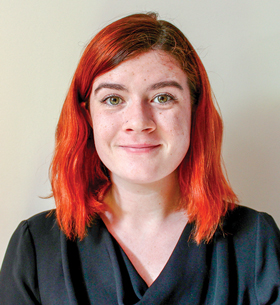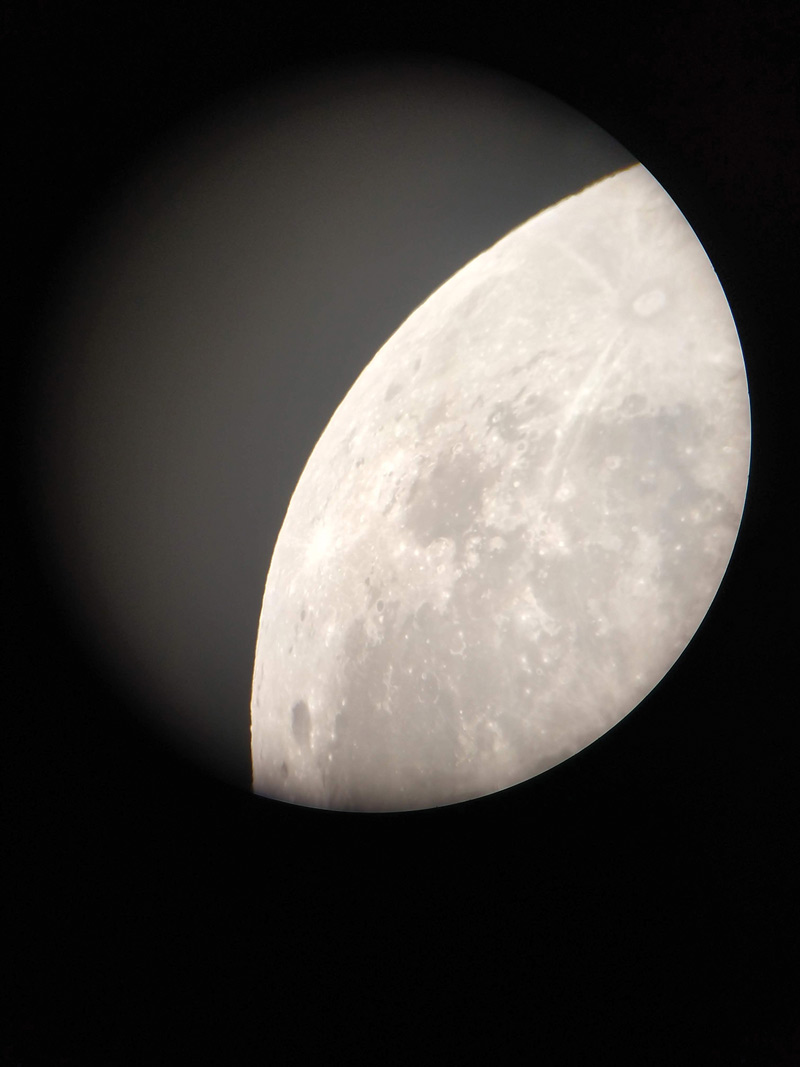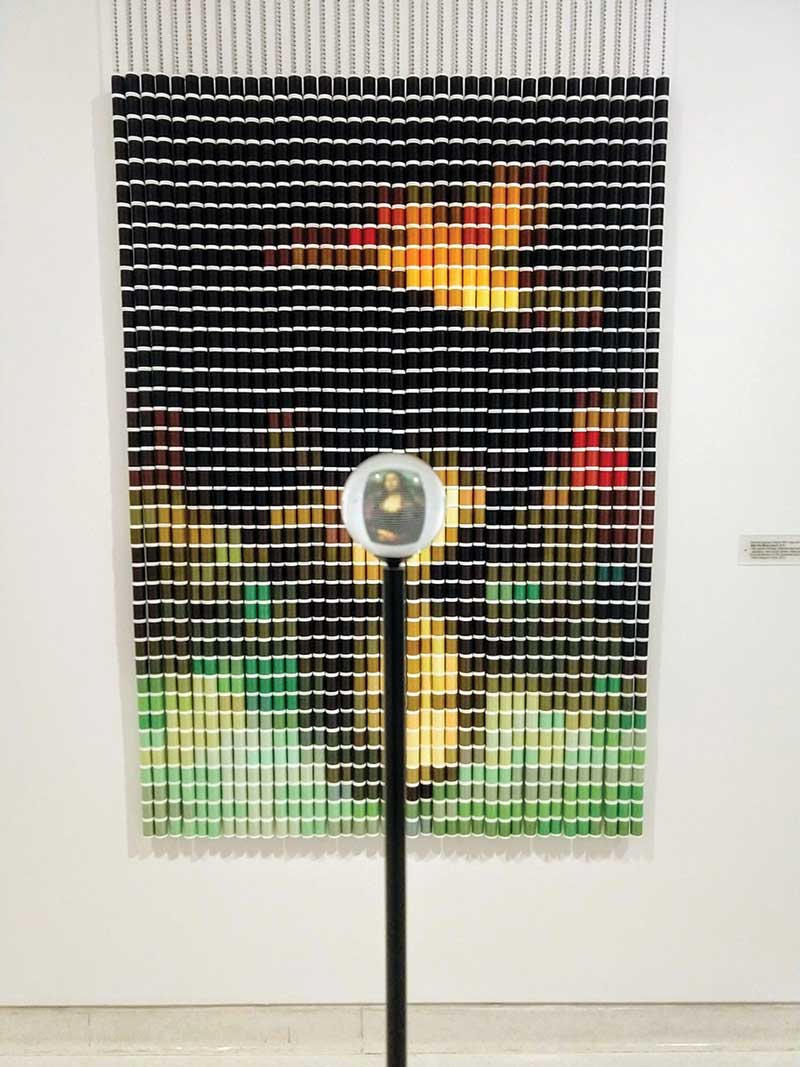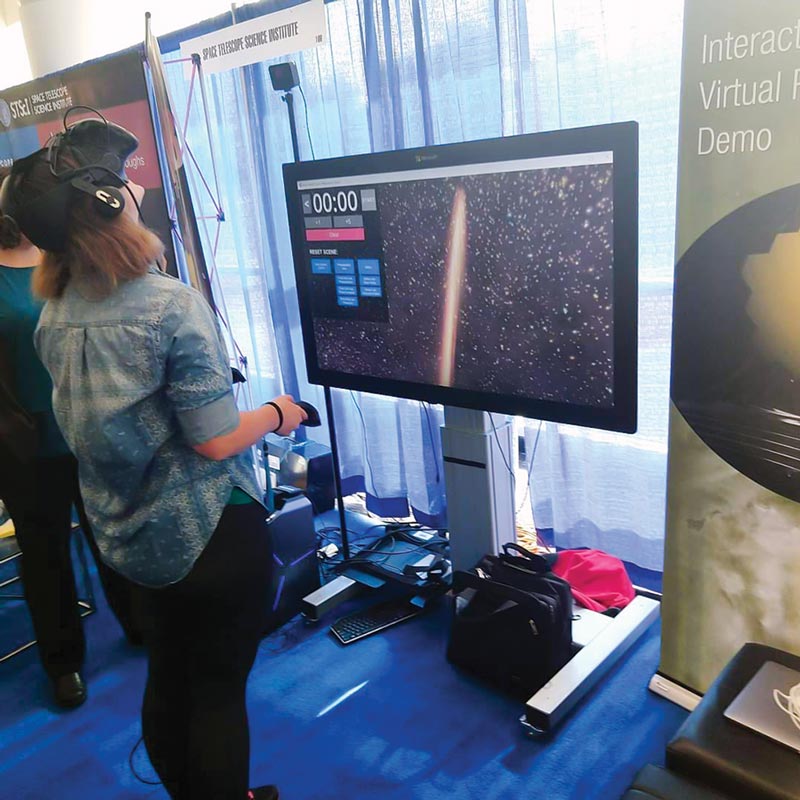2018 AAS Division for Planetary Science:
Spring
2019
Meeting Notes - SPS Reporters at Science Conferences
2018 AAS Division for Planetary Science:
Bringing Planetary Science down to Earth
By:Dany Waller, SPS Chapter President, University of Kentucky
 My research advisor called me late one afternoon to ask if I knew how to get to Tennessee. Being a native Kentuckian, I laughed and said I practically lived next door. Then he insisted I look at the email he had sent only moments ago. The American Astronomical Society’s Division for Planetary Science (DPS) was meeting in Knoxville and the registration deadline was a week away. I knew I had to find a way to get there.
My research advisor called me late one afternoon to ask if I knew how to get to Tennessee. Being a native Kentuckian, I laughed and said I practically lived next door. Then he insisted I look at the email he had sent only moments ago. The American Astronomical Society’s Division for Planetary Science (DPS) was meeting in Knoxville and the registration deadline was a week away. I knew I had to find a way to get there.
DPS is dedicated to research within our solar system, specifically planetology and solar system exploration. As a senior who is researching lunar and martian geophysics, attending this conference was a dream come true. Hosted by the University of Tennessee at Knoxville, the meeting offered academic mentoring workshops, informational sessions on publishing and advancing your career, and over two dozen talks on innovative planetary research.
When I arrived, I was met with a bright room filled with posters, bustling booths, and large touch screens featuring even more posters! After picking up our badges and adorning them with “First Time Attendee” stickers, fellow student attendee Kris Andrew and I took our time exploring the main hall. There was a planetary-science-inspired art exhibit, booths from half a dozen universities with tempting offers of graduate school, a booth selling miniature stuffed planets, and two space-themed virtual reality demonstrations! I gleefully spent my first half hour of the conference launching digital stars into a black hole.
As an avid science outreach volunteer and NASA solar system ambassador, I took pages of notes for future workshop ideas and demonstration designs based on what I saw in the hall. I then wandered over to the large touch screens that hosted an electronic poster gallery. Several people stopped by and read along with me, and I made small talk with physicists from far-flung places like California’s Jet Propulsion Laboratory and the Atacama Large Millimeter/submillimeter Array in Chile.
Another highlight of my first day was the Women in Planetary Science Discussion Hour. It was affirming to speak with other women who experience imposter syndrome and exchange tips on how to manage that anxiety. I also learned about some of the problems that women of color face in the planetary sciences, an issue that I was incredibly undereducated on. I am so grateful for the opportunity to listen to the perspectives of other women.
The second day was another fun-filled adventure, exploring outreach activities and attending contributed and plenary talks. That evening, I attended the DPS banquet at the Knoxville Museum of Art. It was my first time at a professional banquet, and I was nervous about knowing only one other person. However, I ended up sitting at a table of fantastic scientists whom I can now call friends. For the evening’s pumpkin-decorating contest, we brought together our variety of research fields—cloud systems on gas planets, magnetic anomalies on the moon, core-collapse supernovae simulations, extrasolar planets, and protoplanetary disks—to create a beautiful “planet.”
After dinner, Kris and I attended a telescope observing session that turned out to be the best event that we attended. We spent two hours on the roof of the physics building, connecting with students, learning a lot about ground-based telescopes, and viewing objects in the solar system through various telescopes. My favorite thing to see (unsurprisingly, given my research focus) was the moon!
There was an incredible amount of content at DPS, which was a little overwhelming, and often talks ran long due to questions, but the environment was one of pure curiosity. From the talks I attended, the most memorable quote was by research scientist Dr. Shannon Curry: “All models are wrong; some are useful.” The most frustrating part of my undergraduate research has been encountering models that explain some parts of a problem but not all. It was strangely comforting to see professionals grappling with the same situation.
This was my first professional conference, and it has set the bar astronomically high! The wealth of resources that I brought back is invaluable, as well as the generosity of so many physicists in their mentorship and kindness to first-time attendees. I cannot wait to attend again next year!



